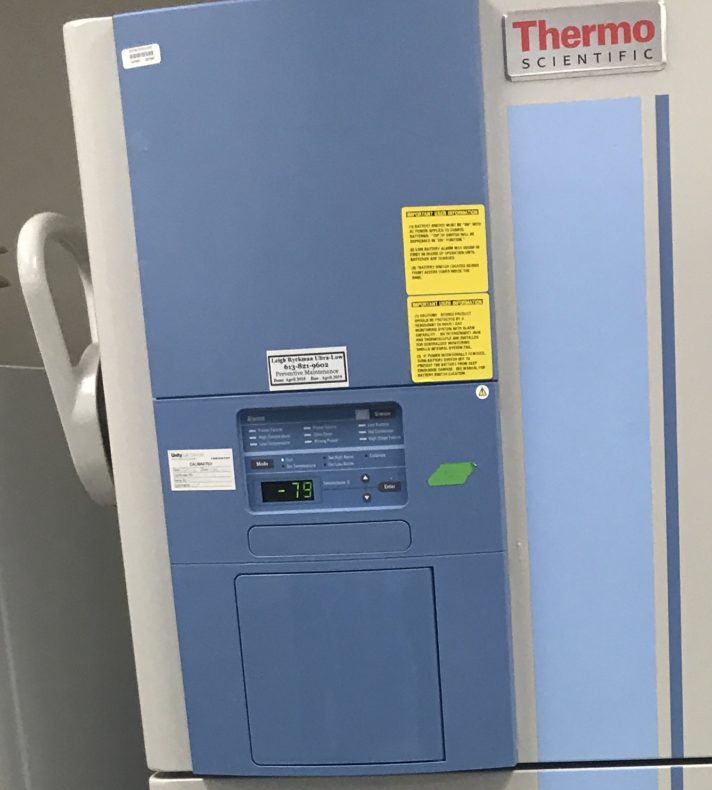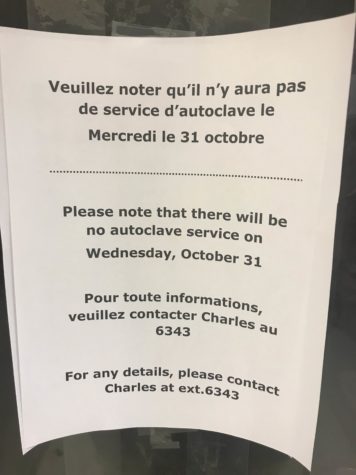Jessa Gamble is embedded in an experimental evolution lab at the University of Ottawa.

What I cannot simulate, stepping into the daily life of a lab and its early career researchers, is the stress they feel. I do not, except vicariously, buzz with the manic tension of finalizing a five-year NSERC grant. I am not a post-doc clinging to the steep sides of a job selection pyramid, wondering whether I will summit Mount Tenure or slide off into the outside world, for which my training leaves me unprepared. The stakes just aren’t there for me.
The week has been peppered with little hitches, despite a ridiculous degree of warmth from everyone at the lab. The night before we were to hammer down an experimental design for my first project, Felipe found that a similar direction had been followed already, published in Proceedings of the Royal Society B just last month. Lab safety training was a depressing barrage of images: acid-ruined eyes, stretchered victims and fire carnage. The autoclave went down just as I was ready to put in some KB medium, freshly stirred in the translucent hurricane of the magnetic mixer. My first attempt at streaking became an exercise in slicing Agar on a Petri dish. It was immediately obvious that I cannot begin to replace a 10,000-hour expertise in evolutionary microbiology with a few weeks of intensive reading.

Current Reading (open to suggestions)
“Temperature drives diversification in a model adaptive radiation,” by Guan-Guo Zhang, Han-Shu Lu and Angus Buckling. Proceedings of the Royal Society B, 285. October, 2018.
“Adaptive radiation in a heterogeneous environment,” by Paul B. Rainey & Michael Travisano. Nature Vol 394. 2 July 1998.
Experimental Evolution and the Nature of Biodiversity, by Rees Kassen (2014)
Evolution: Making Sense of Life, by Carl Zimmer & Douglas J. Emlen (2015)
Lab Girl, by Hope Jahren (2016)
But none of this bothered me in the slightest. What I have been faced with most intensely is this business of a journalist embedding with her subjects and to what degree this would become a work of participatory journalism, as opposed to a piece of unpaid communications work. There is a bunch of precedent for this kind of project, but nothing I’ve found quite fits. Last week Ava Kofman profiled in the New York Times Magazine philosopher Bruno Latour, who also embedded himself for two years as a participant-observer in a biology lab. As his own attempts to master pipetting fell flat, he appreciated all the more those who manage to acquire embodied knowledge.
Disclosure of Goods received:
1 white lab coat
1 workspace in graduate students’ office
Liability insurance for lab-related risks
University library and internet access
Experimental materials and equipment use
1 lab notebook
3 sharpie pens (fine tipped)
Embedded journalism in the context of armed conflict has well-known ethical problems, but it’s a spectrum. Even when journalists pay their own way in the field, they are often reliant on their subjects for safety and training. Moneyball author Michael Lewis spends months on end with his subjects, a source of envy for Malcolm Gladwell, who doesn’t consider himself likeable enough to pull off the same.
But what if your sources are the ones who are that likeable, and writing about them begins to feel like a betrayal? Only a week in, I already feel a resistance to writing up events of the lab “behind their backs.” I feel invested in the success of their research and in each of the grad students’ life paths. As the early career researchers around me weather the endurance test that winnows away the majority–not necessarily the less brilliant, but also those without a certain type of emotional resilience or family circumstance–I will be watching. This week’s introduction to the work has convinced me I will not be watching dispassionately.
“…weather the endurance test that winnows away the majority–not necessarily the less brilliant…”
THIS. One of my profs said that getting a PhD is more about persistence than intelligence. So true.